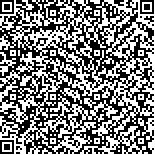| 摘要: |
| 以内蒙古地域碱土房建筑作为研究
对象,分析碱土房建筑的源流与地域分布以
及不同地域间环境影响因素的相似性与差异
性,在此基础上,从材料与建造工法2个方
面,分析碱土房建筑对内蒙古地域环境的选
择与适应,形成碱土房建筑在内蒙古地域输
入、分布与环境适应的完整认知,进而揭示
内蒙古地域碱土房建筑形成与发展的深层
结构。 |
| 关键词: 碱土房 材料 建造工法 环境适
应性 |
| DOI:10.13791/j.cnki.hsfwest.20210616 |
| 分类号: |
| 基金项目: |
|
| Origin and Adaptation: A Study on the Origin and Environment Adaptability of Materialsand Construction Methods of Jiantufang in Inner Mongolia Region |
|
ZHANG Peng
|
| Abstract: |
| Jiantufang is a type of vernacular architecture widely distributed in the Songliao Plain
and the Huanghuaihai Plain. Because its roof form is similar to the cartwheels, so it is often Known
as the “cartwheel room” or “rolling water room” in the eastern part of Inner Mongolia region. It’s
structure method is very similar to that of the grass mud roof in the late Neolithic age. Its form can
be traced back to the Han Dynasty. It was distributed in the Northeast. The rest are scattered in
Hebei, Shanxi, Shandong, Henan, Shanxi, Gansu, Xinjiang and other places.
In Inner Inner Mongolia region, Jiantufang is distributed in the eastern part of Inner Mongolia
region and is a type of “foreign” vernacular architecture, which was gradually imported, spread,
developed, and evolved from the Huabei Plain to the Inner Mongolia region region following the
migration of Han immigrants from the Central Plains in ancient times. That is a process in which the
subject adapts to the object of the geographical environment.
This article takes the Jiantufang in Inner Mongolia region as an example, adopts the method
of comparative study, firstly explores its origin, geographical distribution and the similarity and
difference of environmental influencing factors between different areas. Base on that, this thesis
analyzes the selection and adaptation of Jiantufang to the environment of Inner Mongolia region from
two aspects of materials and construction methods, and obtains the complete cognition of the input,
geographical distribution and environmental adaptation of Jiantufang in Inner Mongolia region, and
reveals the deep structure of the origin and development of Jiantufang in Inner Mongolia region.
From an etymological point of view, adaptation, in Latin means the action and process of
adjusting or modifying something (one thing) to make it suitable for a new thing, condition or state; in
Chinese, it means that things adapt to the objective conditions, and self-regulate with environmental
changes and at the same time counteract the interactive process of the environment. Therefore, the
essence of adaptation is the process by which things as the subject adapt to the environment (or
objective conditions) through their own adjustments.
From the perspective of environmental adaptation, the formation and development of vernacular
architecture in the region are also affected by a variety of environmental factors. This article classifies
them into three categories: physical geography, social culture, and economic technology. However,
because the Jiantufang in Inner Mongolia region was gradually formed and developed after the Han
immigrants from the Central Plains were introduced into the Inner Mongolia region area, in this process,the formation of regional environmental factors is not only related to the “output place” of Jiantufang in the Huabei Plain. The influencing factors are similar, but
also have their own particularities. From the similarity point of view, the Jiantufang in the two regions belong to the same ethnic group and have similar building
material resources. From the perspective of particularity, there are significant differences in the environmental factors of Inner Mongolia region in terms of
natural climate, material resources, economics and technology. The above-mentioned environmental influence factors not only endow the similar characteristics
between the Jiantufang in the Inner Mongolia region region and the Huabei Plain, but also form its own distinctive regional characteristics.
From the analysis of the environmental adaptability of building materials and construction methods, the lack of natural material resources and
robustness in the Inner Mongolia region region; water resistance (climate precipitation), thermal insulation (temperature); economy and other factors are
what the construction of Huabei needs to deal with the main environmental influence factors, therefore, its environmental adaptability mainly reflects the
material characteristics, selection and environmental adaptability, including the abundance of material resources, the convenience and economy of obtaining
materials, and the physical characteristics of the building; the environmental adaptability of construction methods, Including the limited use of wood, the
wall has the dual functions of load-bearing and heat preservation, and the waterproofing of walls and roofs.
Through research, this article believes that the formation and development of Jiantufang in Inner Mongolia region, from the perspective of the object
environment, firstly stems from the transformation of the Central Plains immigrants to the regional environment of Inner Mongolia region. Through
immigration and agricultural development, it has brought sufficient crops building materials and the social and cultural environment of settlement to Inner
Mongolia region; secondly, from the perspective of the main building, due to the impact of regional environmental differences, the Jiantufang in Inner
Mongolia region has made a positive response to the regional environment in terms of materials and construction methods. The self-adjustment and revision
of the original material system and construction method will ultimately achieve the goal of adapting the main building to the object environment.
This article analyzes the distribution of the source and flow of Jiantufang in Inner Mongolia region and their environmental adaptability, and basically
clarifies the relationship between the spread of Jiantufang in Inner Mongolia region and lays a research foundation for further analysis of the changes from
nomadic to settled vernacular architecture in Inner Mongolia region from a larger perspective. |
| Key words: Jiantufang Material Construction Method Environment Adaptability |


